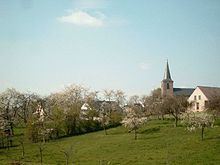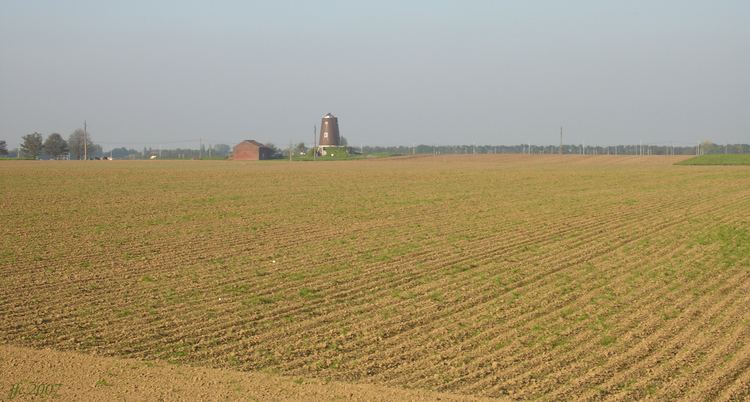 | ||
Weather 12°C, Wind NE at 8 km/h, 51% Humidity | ||
Harlem shake team cycliste de hesbaye
The Hesbaye (French), or Haspengouw (Dutch, in Latin: Hasbania or Haspinga) is a geophysical region in Belgium, mainly defining the southern part of the province of Limburg. Other parts are also found in neighbouring provinces: northwestern Liège, southeastern Flemish Brabant and northeastern Walloon Brabant. The Limburgish portion consists the cities of Tongeren, Sint-Truiden, Bilzen and Borgloon, the Flemish Brabant portion includes Tienen, Landen and Zoutleeuw, the Walloon Brabant portion includes Jodoigne and in Liège the towns Hannut and Waremme.
Contents
Geographically, Hesbaye borders on two similar regions of rolling hills: to the west Hageland, to the south, on the other side of the river Meuse (Dutch: Maas), Condroz. To the north it borders on the flat sandy Campine (Dutch: Kempen) region. To the south and east it borders on the valley of the Meuse.
The fertile ground of this region's rolling countryside is mainly used for agricultural purposes, and in this context it is often divided into two divisions, with the boundary running through Sint-Truiden, Borgloon and Tongeren. The northern "Humid" (Dutch Vochtig) part has a high water table and many springs; it is by far the main fruit growing area of Belgium, as well as home to some of the most northerly vineyards in Belgium. The southern "Dry" division is somewhat more fertile and the ground water sinks more easily; in this region sugar beet, chicory, flax, rapeseed and grains (90% of which is wheat and barley) are cultivated.

Aeroclub de hesbaye belgie
History

From the seventh century Hesbaye was an important fief in the northwestern marches of the Merovingian kingdom of Austrasia. It lay in "that region where the western foreland of the Eifel meets the south-western fringe of silva carbonaria, a woodland frequently mentioned in Frankish historiography." The Merovingian county was consolidated from the old mark Haspinga of which the final -ga element survives in the -gouw of the modern Dutch name: Gau (plural Gaue) was an old Frankish term for a political division, equivalent in its etymology to the French pays.

Hesbines (confusingly spelled Hispania in some old documents) was perhaps set apart for Lambertus (born 640), son of Guerin, count of Poitiers (ca. 612 in Austrasia, – 677/87). It was mentioned in the division of territories between Charles the Bald and Louis the German in 870 in the Treaty of Meerssen. In 1040, the Emperor Henry III gave the fief to the prince-bishop Nithard of Liège who integrated it with the Prince-Bishopric of Liège.

Known counts of Hesbaye are Ingerman and his consanguine Robert, grandfather of Robert the Strong, who founded the dynasty of the dukes of Brabant and the kings of France, also known as Capetians.

The fortunes of the line of Counts of Hesbaye were cemented when Ermengarde of Hesbaye (778 in Hesbaye — 3 October 818 in Angers), daughter of Ingerman, married Louis the Pious, son of Charlemagne.

Today Hesbaye continues to be rural, with many small villages. Théo Brulard, La Hesbaye. Étude géographique d'économie rurale (Louvain) 1962, attempted to disengage the original aspect of the region from its open, deforested agricultural aspect of modern times, characterising Hesbaye as a human region rather than a natural one.

